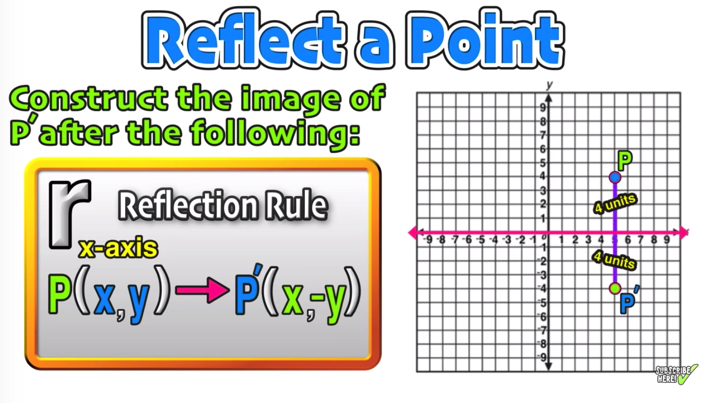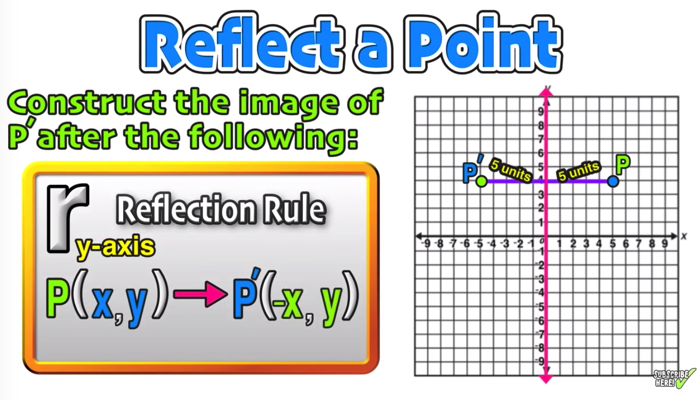What is a Reflection in Math?
Learning how to perform a reflection of a point, a line, or a figure across the x axis or across the y axis is an important skill that every geometry math student must learn.
In real life, we think of a reflection as a mirror image, like when we look at own reflection in the mirror.
This idea of reflection correlating with a mirror image is similar in math.
This complete guide to reflecting over the x axis and reflecting over the y axis will provide a step-by-step tutorial on how to perform these translations.
First, let’s start with a reflection geometry definition:
Math Definition: Reflection Over the X Axis
A reflection of a point, a line, or a figure in the X axis involved reflecting the image over the x axis to create a mirror image. In this case, the x axis would be called the axis of reflection.
Math Definition: Reflection Over the Y Axis
A reflection of a point, a line, or a figure in the Y axis involved reflecting the image over the Y axis to create a mirror image. In this case, the Y axis would be called the axis of reflection.
What is the rule for a reflection across the X axis?
The rule for reflecting over the X axis is to negate the value of the y-coordinate of each point, but leave the x-value the same.
For example, when point P with coordinates (5,4) is reflecting across the X axis and mapped onto point P’, the coordinates of P’ are (5,-4). Notice that the x-coordinate for both points did not change, but the value of the y-coordinate changed from 4 to -4.
What is the rule for a reflection across the Y axis?
The rule for reflecting over the Y axis is to negate the value of the x-coordinate of each point, but leave the -value the same.
For example, when point P with coordinates (5,4) is reflecting across the Y axis and mapped onto point P’, the coordinates of P’ are (-5,4). Notice that the y-coordinate for both points did not change, but the value of the x-coordinate changed from 5 to -5.
You can think of reflections as a flip over a designated line of reflection. You can often visualize what a reflection over the x axis or a reflection over the y axis may look like before you ever apply any rules of plot any points. This aspect of reflections is helpful because you can often tell if your transformation is correct based on how it looks. If the new image resembles a mirror image of the original, you’re in good shape! If it does not, you probably did something wrong.
Examples of Reflection Over the X Axis and Y Axis:
Notice how the reflection rules for reflecting across the x axis and across the y axis are applied in each example.
Check out the video lesson below to learn more about reflections in geometry and for more free practice problems:
You can download the free lesson guide that accompanies this video lesson by clicking here.
Looking for More Geometry Transformation Help?
Free Guide to Geometry Dilations and Scale Factor
Free Guide to Rotations (90, 180, 270, 360)
Free Guide to Translations on the Coordinate Plane
Tags: Reflection over the x-axis (x axis), Reflection across the x-axis (x axis), Reflection over the y-axis (y axis), Reflection across the y axis (y axis), Reflection in the x-axis (x axis), Reflection in the y axis, Reflection geometry definition, Reflection math definition
Have thoughts? Share your thoughts in the comments section below!
(Never miss a Mashup Math blog--click here to get our weekly newsletter!)
By Anthony Persico
Anthony is the content crafter and head educator for YouTube's MashUp Math. You can often find me happily developing animated math lessons to share on my YouTube channel . Or spending way too much time at the gym or playing on my phone.







